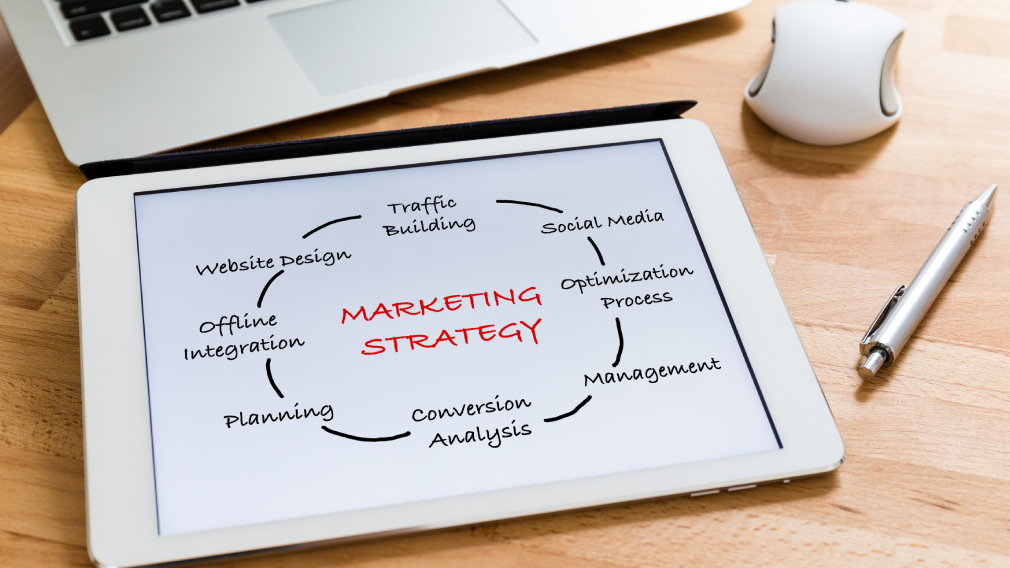Understand drip campaigns
If you are wondering how to set up a drip campaign, it helps to start with a clear understanding of what drip email marketing entails. A drip campaign is a series of automated, targeted emails that you schedule to send based on subscribers’ actions, interests, or other defined triggers. By “dripping” valuable content over time, you can provide a steady stream of useful information rather than overwhelming your audience with a single bulk message.
Drip campaigns thrive on personalization and segmentation, ensuring that each email resonates with the unique challenges your subscribers face. According to data from Emma, automated emails generated 320% more revenue compared to non-automated emails in 2015 (Emma). This highlights the potential impact of sending the right content to the right person at precisely the right moment.
Why they matter
- They nurture leads by offering timely information.
- They keep your brand top of mind with minimal manual effort.
- They allow you to craft a supportive environment that fosters trust.
- They can significantly increase conversions, especially when they are well-timed and personalized.
Examples of drip workflows
- Welcome flows for new subscribers.
- Re-engagement sequences for inactive contacts.
- Triggered campaigns based on behavioral cues like abandoned carts or downloaded resources.
These varied approaches lay the groundwork for a comprehensive strategy that drives loyalty and repeat business. You can also integrate them with broader marketing efforts, such as social media ads, retargeting, or SMS outreach, to create an individualized plan that meets your audience’s needs.
Plan campaign goals
Before you begin drafting any emails, map out your objectives to create a tailored approach that supports lasting results. Decide whether you want to onboard new clients, encourage repeat purchases, or reactivate inactive subscribers. This clarity ensures each message has a purpose rather than feeling random or detached.
Setting SMART objectives
Building a drip campaign without a clear direction can dilute your efforts. Instead, frame your goals using the SMART criteria (Specific, Measurable, Achievable, Relevant, Time-bound). For example:
- Drive a 20% increase in click-through rates (CTR) for your monthly newsletter by the end of the quarter.
- Convert 15% more trial users into paying customers within two months of signing up.
These clearly defined goals help ensure every email in your sequence moves you closer to measurable outcomes. In addition, always factor in your unique business challenges, such as limited seasonal demand or high competition.
Establish meaningful milestones
Break down your campaign into phases, each with a tangible milestone. You might plan:
- Welcome series completion rate.
- Re-engagement rate for dormant leads.
- Purchase conversions for a specific offer.
This segmentation helps you track progress and ensures you have the support necessary for lasting success. You can review whether your welcome email open rates are meeting benchmarks or if your re-engagement emails are effectively bringing past clients back.
Segment your audience effectively
Segmentation is at the heart of any drip strategy. Research shows that segmented campaigns can generate 58% more revenue than generic sends (ContempoThemes). By tagging subscribers based on demographics, past behavior, and purchase history, you can offer content that acknowledges their needs and interests.
Identify segmentation criteria
- Demographics: age, location, industry
- Stage in customer journey: new leads, long-term clients
- Behavioral triggers: clicked a specific link, downloaded a guide, visited pricing page
- Engagement level: frequent openings, dormant subscribers
Defining these segments upfront allows you to create an environment where each subscriber receives the support that resonates with them. If you’re looking for more in-depth guidance, you can explore email segmentation strategies for better engagement, which covers segment definition, data collection, and targeted messaging in greater detail.
Deliver tailored content
Once you have your segments, craft the emails for each. For instance, newly subscribed leads might receive a friendly welcome series that reflects welcome email sequence best practices. Long-time customers, on the other hand, could receive outreach related to loyalty promotions or upcoming service expansions.
Strive to maintain an empathetic tone throughout each segment’s journey. Remind your subscribers that you understand their unique challenges. By doing this, you create a sense of community and trust—factors crucial for ushering leads toward meaningful engagement.
Write compelling email content
With your audience segmented and goals clarified, it’s time to focus on your message. Avoid lengthy or overly formal language that might overshadow authenticity. Open rates surge when subject lines are concise and relevant, which is one reason experts recommend brainstorming multiple options and running tests to discover what resonates with each segment.
Craft strong subject lines
Subject lines have a notable impact on open rates, with some marketing professionals citing increases of up to 119% for well-crafted lines (ContempoThemes). Techniques such as incorporating personalization tokens, referencing a user’s recent action, or highlighting an enticing benefit can encourage the subscriber to open the email.
If you need additional inspiration, take a look at best email subject lines for open rates, where you’ll find strategies for making your subject lines stand out.
Develop engaging body copy
In the body of your emails, alternate between short, punchy paragraphs and more detailed sections. This rhythm helps maintain attention and clarifies each point. Throughout, remain empathetic and supportive—acknowledge the challenges your subscribers may be facing, then share how your unique solution can help them progress.
Try weaving in data or success stories to reinforce credibility. For instance, you might reference how “welcome emails have 86% higher open rates” (Emma) to assure readers that signing up is worthwhile. Additionally, modeling your structure using bullet points and bold text makes longer emails more digestible.
Include a clear call to action
Each email in your drip sequence should have a focused call to action (CTA). Whether it’s scheduling a consultation, reading a case study, or downloading a free guide, your CTA needs to feel natural and relevant. For example, if your email outlines how drip campaigns can boost ROI, you might invite readers to learn how to track email marketing performance once they finish reading.
Automate your sequences
After polishing your email content, it’s time to set up the automated workflows in a platform such as Mailchimp, Klaviyo, or GoHighLevel. You can also explore tools like ActiveCampaign, Brevo, or Kit from the US Chamber’s recommendations (US Chamber).
Identify triggers
Define events that move a subscriber from one email to the next. To illustrate:
- A new subscriber form completion triggers the first welcome email.
- A link click on a certain offer triggers a follow-up sequence.
- An abandoned cart triggers a reminder email.
These triggers underscore the importance of personalization by delivering appropriate messages at precisely the right times. If you’d like more details on automatically prompting relevant emails, see how to integrate email with your crm, which can guide you through mapping out your contact data.
Establish a schedule
Timing your messages is critical. Spacing emails too close can feel overwhelming, while spreading them too far could cause subscribers to lose interest. According to the US Chamber, drip campaigns can be highly customizable: you decide which intervals align best with your brand and audience needs (US Chamber).
You could start by sending a welcome email immediately after someone subscribes, then another check-in within 3 to 5 days, followed by a reminder or secondary offer the following week. Test different intervals until you find the sweet spot. If you have questions about frequency, you might see how often should you send marketing emails to discover best practices.
Monitor and refine performance
A successful drip campaign demands ongoing evaluation. Key performance metrics, including open rates, click-through rates, unsubscribe rates, and conversions, illuminate where your strategy is thriving and where it needs adjustment.
Gather and analyze data
Many platforms offer dashboards where you can track subscriber behavior. Take advantage of these analytics to measure your objectives, which might include:
- Achieving a certain open rate for your welcome emails
- Extending the average time before a prospect unsubscribes
- Increasing conversions for a targeted offer
By aligning metrics with goals, you can quickly spot whether a sequence is delivering the results you envisioned. You may also want to run an A/B test for subject lines, CTAs, or send times to see which variables resonate best. If you need guidance, check out our email a b testing guide.
Optimize with iterative improvements
Automation tools allow you to refine in real time. If metrics slump, consider adjusting your content. You might want to shorten the body text, add more action-oriented language, or switch up the design. You could even refresh your segments if certain subscriber groups show little engagement.
Keep in mind that small changes can make a big difference. For instance, rewriting headlines to address pain points more directly or offering a limited-time promotion can dramatically improve click-through rates. Over time, these tweaks ensure your drip campaign remains an individualized, comprehensive approach that resonates with your audience.
Explore extra tips and resources
Whether you’re just getting started or you’ve already launched a series of campaigns, there are always ways to deepen your strategy. Below are some suggestions to help you personalize your drip sequence and provide even more tailored treatment to your audience.
Welcome flows, re-engagement, and triggered sequences
Craft a welcome flow to set the tone for new subscribers, letting them know what they can expect from your brand. You can explore welcome email sequence best practices for a detailed look at structuring these introductions. Re-engagement campaigns, on the other hand, focus on bringing inactive subscribers back into the fold. If that’s your goal, consider referencing how to write a reengagement email, which covers how to recapture interest.
Triggered sequences are powerful because they respond directly to user actions or data points, such as a link click or a specific page visit. This means subscribers receive whatever support is most relevant to them in the moment, increasing the likelihood they’ll maintain interest in your brand.
Build strong foundations
You can’t automate what you don’t have. Establishing a robust email list is vital for any drip campaign. If you need help on that front, head over to how to build an email list from scratch. Next, make sure your messages have compelling content. You’ll find practical guidance on writing emails that convert by reviewing how to write a high converting email.
By laying a sturdy base, you can ensure every message flows naturally from the previous one, providing the support necessary for a long-term, beneficial relationship with your audience.
Maintain compliance and trust
No matter how well-crafted your campaign may be, it’s essential to stay compliant with regulations like CAN-SPAM or GDPR where applicable. A quick read on compliance tips for email marketing can help you maintain the trust you’ve built and avoid legal pitfalls.
Additionally, consider deliverability. Emails are only effective if they reach the inbox. Learn more about best practices in how to increase email deliverability. From using a reputable IP address to having a clean subscriber list, these steps help safeguard your reputation as a sender.
Integrate with other channels
Email is a powerhouse, but it doesn’t have to operate alone. Integrate your drip sequences with SMS reminders or retargeting ads to create a more complete user experience. If you’re curious about comparing these tactics, you can visit email marketing vs sms marketing to see how both approaches complement each other.
Similarly, combining your automated flows with CRM insights can supercharge personalization. Syncing data about a lead’s interactions across various touchpoints allows you to cultivate a unified, supportive environment where each recipient feels seen and understood.
Conclusion
Designing and launching an effective drip campaign is all about understanding your audience, setting clear goals, segmenting effectively, and writing compelling emails that reflect a supportive tone. By weaving in empathic messages, tailored content, and consistent calls to action, you can nurture relationships and build credibility with your audience over time.
As you refine your approach, remember to monitor your performance data and adapt your strategy based on what the numbers reveal. With every iteration, your drip emails will grow more impactful, fueling deeper engagement, higher conversions, and stronger loyalty among the people you serve.
By taking these steps, you’ll not only learn how to set up a drip campaign but also ensure it becomes a dynamic system that delivers the support and information your subscribers need at precisely the right moments. Ultimately, a well-structured drip campaign is an opportunity to form lasting connections that benefit both your audience and your business.















